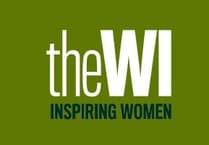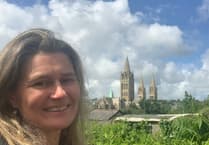Cornwall’s intangible heritage is linked inseparably to the distinctiveness of the Cornish people and its nationhood. The tangible heritage of Cornwall can be seen everywhere throughout our landscape and environment. The ancient and historic monuments, quoits, stone crosses, castles, churches together with a range of other listed buildings and scheduled monuments. Some 30,000 miles of Cornish stone hedges, some stretching back into prehistoric times along with the habitat of peoples which constructed some of these can be seen at places such as Chysauster, Carn Euny and Boden.
However, it’s not tangible heritage, albeit some of these are found mostly or only in Cornwall like fogou’s, which define Cornwall and its people, it is our intangible heritage. The United Nations Educational, Scientific and Cultural Organisation, better known by its acronym UNESCO, sets out a definition to help folk understand what intangible heritage is.
In the UNESCO convention there are five main groupings setting out what it considers intangible heritage. These are; oral traditions and expressions, performing arts, social practices, rituals and festive events, knowledge and practices concerning nature and the universe and traditional craftsmanship. There is little doubt that Cornwall and the Cornish people have intangible heritage spanning all of these that differentiates us from elsewhere in the United Kingdom and the world.
UNESCO was formed in 1945 following a series of meeting begun by allied ministers for education in 1942 who understood the importance of education and culture as a means of bringing together a better future. This in time led to the signing of the ‘Convention Concerning the Protection of the World Cultural and Natural Heritage’ in 1972. This treaty was ratified in August 2024 by 196 states worldwide and of course has had important outcomes for Cornwall with the creation of ‘The Cornwall and West Devon Mining Landscape World Heritage Site’ in 2006. This is the largest industrial World Heritage Site in the United Kingdom spread out over ten areas and acknowledges the importance of Cornwall’s contribution to world mining stretching back to the dawn of Cornish tin and copper mining.
We must also consider the definition, that of a nation, as described by the National Geographic Society. This esteemed society originated in 1888 sets out nation as ‘A nation is a territory where its people are led by the same government. The word ‘nation’ can also refer to a group of people who share a history, traditions, culture and, often, language even if the group does not have a country of its own.’ Today this is also known as ethnic nationalism, wherein the nation and nationality are defined in terms of ethnicity. Perhaps today the most well-known of these stateless nations and its people are the Palestinian’s. Although its territory is controlled by Israel its actual statehood was acknowledged by 146 (75%) members of the United Nations in June 1976. These did not include the USA, United Kingdom or many other larger countries who notably align politically with Israel. Cornwall and the Cornish people also fall into this ethnonationalism grouping although it must be said we are treated somewhat better by the Westminster government.
The 21st century has seen great strides forward in recognition of Cornwall and the Cornish as a nation and national minority, certainly since the Tudor period when Henry VIII and writers of the time acknowledged that fact. November 2002 saw the first occasion that the Cornish language was officially recognised by the UK government. Kernewek would be protected and funding would be provided to encourage a greater number of people to learn the language. Although funding has been somewhat sporadic it has happened and the growth of Cornish speakers and those learning Kernewek continues. UNESCO stated in their endangered language atlas in 2010: ‘UNESCO is pleased to acknowledge that the term 'extinct' does not reflect the current situation for Cornish.
This language is now classified as ‘critically endangered’ and identified as being in process of revitalisation.’ The declaration of the Cornish as an acknowledged ethnic minority of the United Kingdom in 2014 under The Framework Convention for the Protection of National Minorities was a major step forward. This Council of Europe convention gives the Cornish the same status as those people from the other Celtic nations the Welsh, Scots, and Irish. Perhaps someday full recognition through a fully devolved Cornish authority will be achieved.
Referring back to UNESCO’s five main groupings for intangible heritage, besides the unique Brythonic language of Cornwall, there is the Cornish dialect. Scotland has seen what many might refer to as a Scottish dialect recognised as an indigenous language of Scotland by the Scottish government. Use of Cornish dialect is in freefall and far fewer people now use many of its terms in daily life. Dreckly incorrectly termed by many English writers as a slang word is perhaps the most overused and abused dialect word, but many more crop up in conversations between Cornish folk. Greater attention to preserving Cornish dialect needs to happen as part of Cornwall’s oral traditions and expressions.
There has been a resurgence of rituals and festive events throughout Cornwall. The ‘Old Cornwall’ societies were at the forefront of reigniting interest in these during the first half of the 20th century with the Tansys Golowan, mid-summer bonfire events and the harvest celebrations of Crying the Neck. Many festivals some of which died out in the 19th century and new ones based on historic celebrations and activities are now annual events in many Cornish towns. Helston Furry Dance, Montol and the Golowan Festivals in Penzance, Trevithick Day in Camborne just a few of the events and towns celebrating Cornish heritage.
Of the ancient Celtic festivals probably the best known are Samhain held on October 31st and Beltane on May 1st and these are celebrated in Cornwall at the Lowender festival in Redruth and in Padstow by the ‘Obby Oss’ May Day rituals. There are many more and perhaps towns which don’t take part should consider the positive economic impact of doing so. More recently the celebration of Cornwall’s national day has become a trend and St Piran’s celebrations are held throughout Cornwall annually on March 5th.
A festival that encompasses virtually every aspect of Cornish and other Celtic intangible heritage is the Lowender Festival now held annually in Redruth. Here you will encounter Cornish and Celtic music, dance, language, sport and skills having grown from a small festival over 40 years ago based in Perranporth then to Redruth via Newquay.
Performing arts with music and dance in a Celtic type format is growing in popularity and once again finding its feet. Cornish songs many being sung in Kernewek are now much better known and new songs written creating new traditions in music for Cornwall. The 19th century ‘Song of the Western Men’ better known as ‘Trelawny’ is blasted out especially as part of the Trelawny Shout on St Piran’s Day. The Cornish national anthem ‘Bro Goth Agan Tasow’ which shares the same tune as the Welsh and Breton national anthems is less well-known but given time and education hopefully more so. Cornish dance steps are seen at many festivals and some dating to the 19th century or before, such as the mid-Cornwall ‘Snail Creep’, have reemerged with a description provided in the Western Antiquary of 1881.
Knowledge of Cornish history, although recorded in books and documents also form part of Cornish intangible heritage. Although not yet an integral part of the education curriculum this is shared through illustrated talks and lectures throughout Cornwall by experts and researchers. Environmental and landscape talks are also becoming increasingly popular. Traditional craftmanship which form part of Cornish knowledge can be seen in particular throughout Cornwall in its stone hedges. Although the hedges are tangible the knowledge of construction is not and can be classified as an intangible part of Cornish heritage. Take the recent fiasco of the collapsing hedges on the A3075 which needed to be rebuilt, obviously constructed by contractors with little knowledge of the correct way to fashion them to last many hundreds of years. Many other lesser-known niche crafting traditions to Cornwall still remain, but in danger of being lost.
The last few months has seen me working on a project to better share Cornish distinctiveness and intangible heritage. This includes new podcasts and video’s, now nearing completion and another phase of Cornish Place Names (CPN). The purpose of CPN is to make people aware of the Cornish language and how it is connected to many of the places in Cornwall. The number of Cornish places, towns and villages having the prefixes Tre, Pol, and Pen, are very prevalent throughout Cornwall and in many old Cornish surnames. These were mentioned by William Camden in the 16th century and repeated often by other writers, although most do not quote the full verse. Camden wrote ‘By Tre, Ros, Pol, Lan, Caer and Pen. You may know the most Cornishmen’.
Although these rhymes relate to Cornish surnames they also relate to Cornish place names. So, what do these name elements mean? Tre– a settlement, homestead, farm; Ros– heath, moor; Pol– a pond, lake, well; Lan– a religious enclosure; Car– either from karn ‘tor’ or ker ‘hill-fort’; Pen, Pedn– a hill or headland.
Links to this can be found on the website as well as to the podcasts and videos on YouTube. Thanks to Owain Holland from Newlyn for the CPN audio. Owain also produces the Cornish Language Podcast to which links are also provided.









Comments
This article has no comments yet. Be the first to leave a comment.